Flash memory is all around us. Even if we don't notice it. Your phone, camera, and USB drive all use this tiny but mighty technology. Without flash memory, we couldn't carry our files in our pockets or save photos on slim memory cards. It's a key piece in our digital world that makes our devices work.
Think about the last time you saved a file to your USB drive or took a photo on your phone. You were using flash memory! This special type of memory keeps your data safe even when the power turns off. Unlike other kinds of computer memory, flash memory holds onto information without needing constant power.
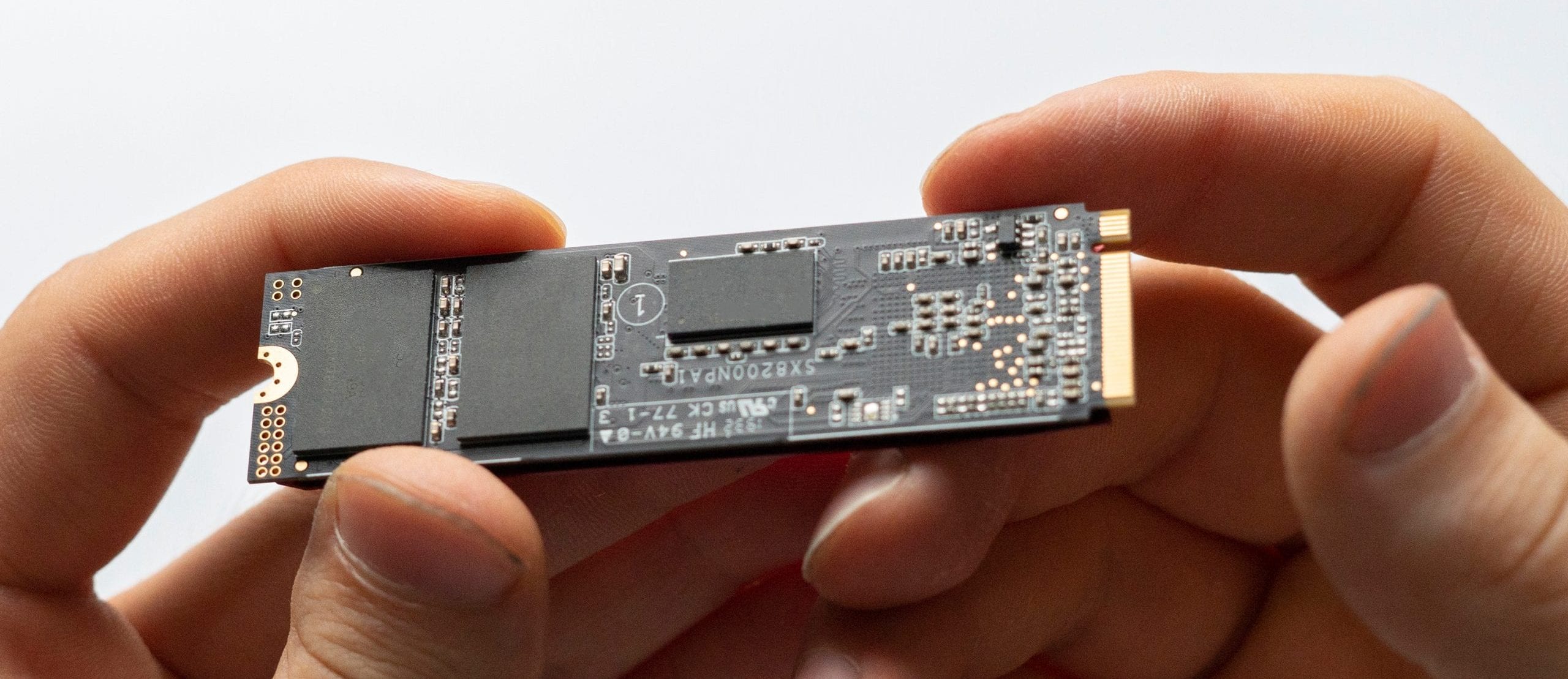
Flash memory comes in different types. NAND and NOR flash memory are the most common. Each type has its own strengths. Some are faster, while others can hold more data. Understanding what flash storage is and how it differs from RAM or hard drives helps you pick the right device for your needs. And if things go wrong, knowing how to recover data from flash memory can save your important files.
Try Recoverit to Recover Data from Flash Memory
Security Verified. Over 7,302,189 people have downloaded it.
In this article
Part 1: What is a Flash Memory?
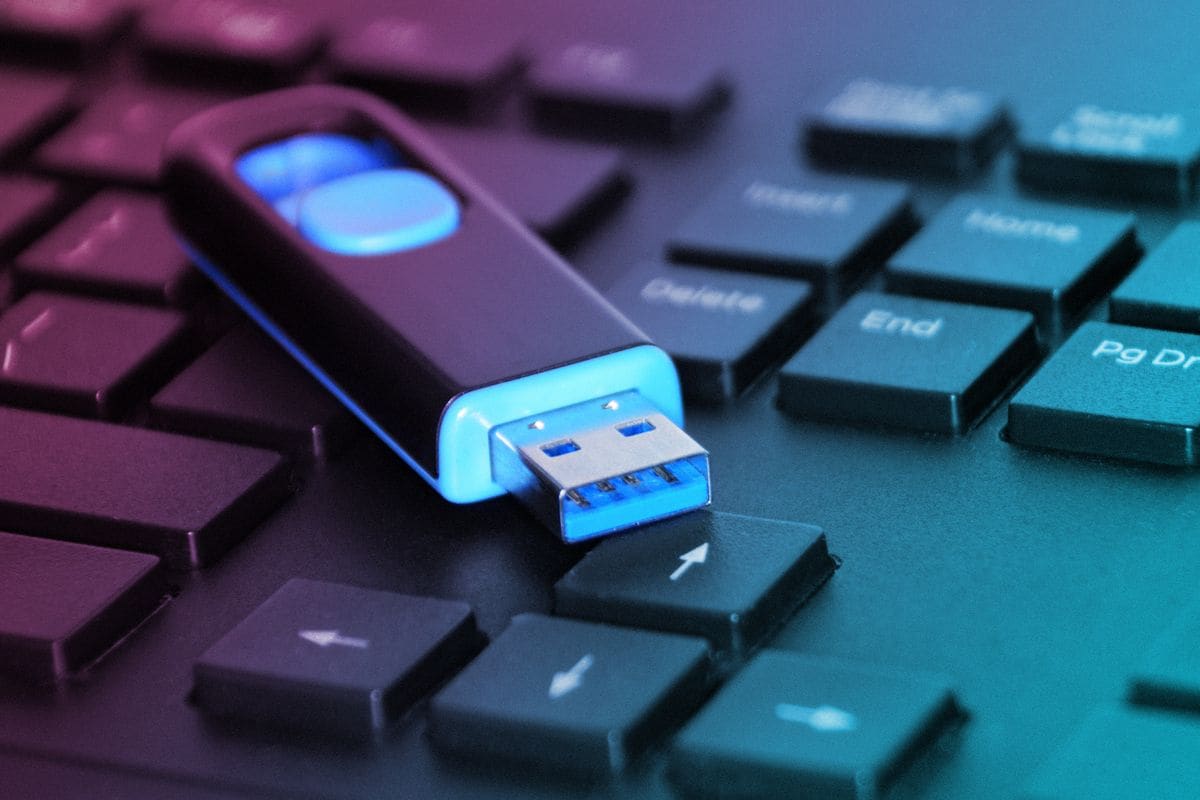
Flash memory stores data even when there's no power. Regular computer memory loses everything when turned off, but flash memory keeps your photos, videos, and files safe. It's great for devices like phones, cameras, and USB drives.
What is flash memory? At its heart, it's a collection of tiny cells that can be electrically charged. Each cell stores data as electrical charges. The name "flash" comes from how quickly large sections of these cells can be erased at once—like a camera flash! Flash storage can be written to, erased, and rewritten thousands of times, making it very useful for everyday devices.
Flash memory was created in the 1980s by Toshiba. Since then, it has grown smaller while holding more data. Modern flash memory can store gigabytes or even terabytes of information in a space smaller than your fingernail. This tiny size, along with low power use and no moving parts, makes flash memory ideal for mobile phones, tablets, and other portable devices.
Uses of Flash Memory
- BIOS Chip
Every computer or laptop has a BIOS chip installed on its motherboard which is responsible for hardware initialization and for providing services to the operating system. BIOS is flash memory, and this is why your computer starts within seconds because it doesn't have to install the operations every time.
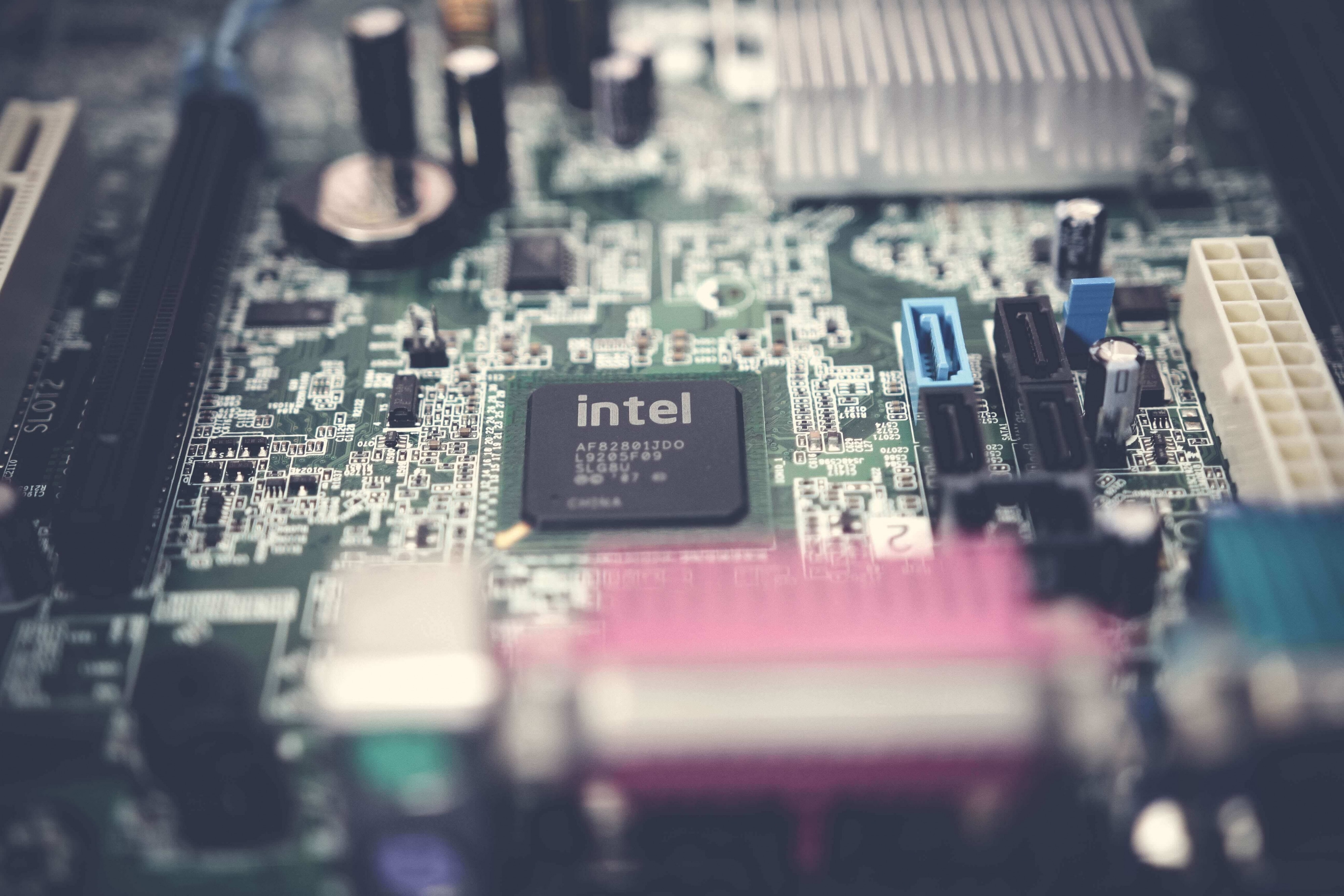
If your BIOS chip is damaged or corrupted, it will damage your whole system and you won't be able to use it. Yes, there are ways to repair it, but you will lose the performance.
- USB Flash Drives
Thumb drives or USB Drives are flash memories that are widely used to store and transfer data. It is plug and play device compatible with any device having a USB port. The fastest USB Flash drive is 3.2 with 420/380 MBps speed and this is only possible due to the characteristics of Flash Memory.
The first USB drive was introduced in 2000 with only 8 MB of storage and was a replacement for floppy and CDs. As it was flash memory, so it was reusable and users found it more useful than a CD or floppy drive
- Modern Digital Devices
Well-known companies that develop digital cameras, tablets, PDA, and mobile phones make the internal and external storage of their devices using the flash memory. Memory Cards that are used with these cameras are the best example of the usage of flash memory in digital devices.
- Printers & Xerox Machines
All the latest printers and xerox machines can store and save the recently printed or scanned documents in their flash memory for a long period of time. You can also manually store a large number of pages in these machines and print them whenever you want. Such flash memory can be operated through the building computer or external computer.
- Medical Equipment
Flash memory is also performing a key role in different medical fields. Flash Memories are used in medical electronic equipment like ECG machines and Holter monitors, to monitor the real-time condition of patients. These are also part of the latest surgical machines like needle surgery apparatus and LaparoGuard.
- Industrial Robots
To speed up the manufacturing processes, many industries are replacing manpower with robots using artificial intelligence. These robots are built for a specific purpose are these instructions are installed in their flash memory in the form of programs.
- Scientific Instruments
Where there is advancement, there is science. Most of the latest scientific equipment like the electron microscope, Ph meters, EC meters, etc have their own flash memory to store data for a certain period of time. This is because the instruments take accurate readings with great precision and store them for future comparisons.
- Flight Data Recorders
It is important to record flight data from communication to the controls. The recorders that keep track of the flight data use flash memory as storage media. This data helps scientists and engineers resolve the bugs and errors during the flight. It also helps to know the reason behind the flight accidents.
Features of Flash Memory

- Non-Volatile
Non-volatile or NVM memory is the type of memory that does not require any power to store and keep data. So, flash memory is a non-volatile memory that does not require any to keep data but you may require power during storage processes. Simply, if you disconnect flash storage, it will not lose its contents. This feature allows us to store data on this memory until you want to remove it.
- Re-Writable
The best feature about flash memory is that it is re-writable. You can remove the previous data and write a new set of new data hundreds of thousands of times on flash memory. Because of this feature, flash memories are used in almost every digital device from homes to large industries.
- Very Low Access Time
Flash memories are lightning-fast that can even reach up to 1000 MBps. Huge servers, scientific institutes, and data gathering companies use flash memories for their fast
Part 2: What is NAND?
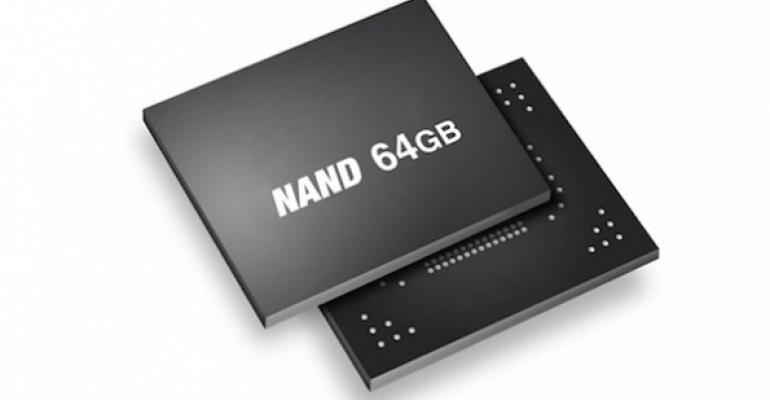
What is NAND memory? NAND is the most common type of flash memory used today. The name comes from the "NOT-AND" logic gate used in its design. NAND flash memory stores data in blocks, with many cells linked together in strings. This design allows for higher storage density, which means more data can fit in a smaller space.
NAND flash memory works like a large apartment building with many rooms. Each room (or cell) can hold data, and they're arranged in blocks and pages. When you save a file, the data gets stored across these cells.
One key feature of NAND is that while you can read data from individual pages, you have to erase entire blocks at once. This unique trait affects how NAND flash memory is used in devices.
What is a NAND memory's key features? Here's what makes it special:
- Stores more data in less space.
- Lower cost per gigabyte than other memory types
- Good for storing large files like photos and videos
- Excellent for portable devices where space matters
- Can handle thousands of write/erase cycles
- Uses less power than hard disk drives
Part 3: Flash Memory VS RAM: A Quick Comparison
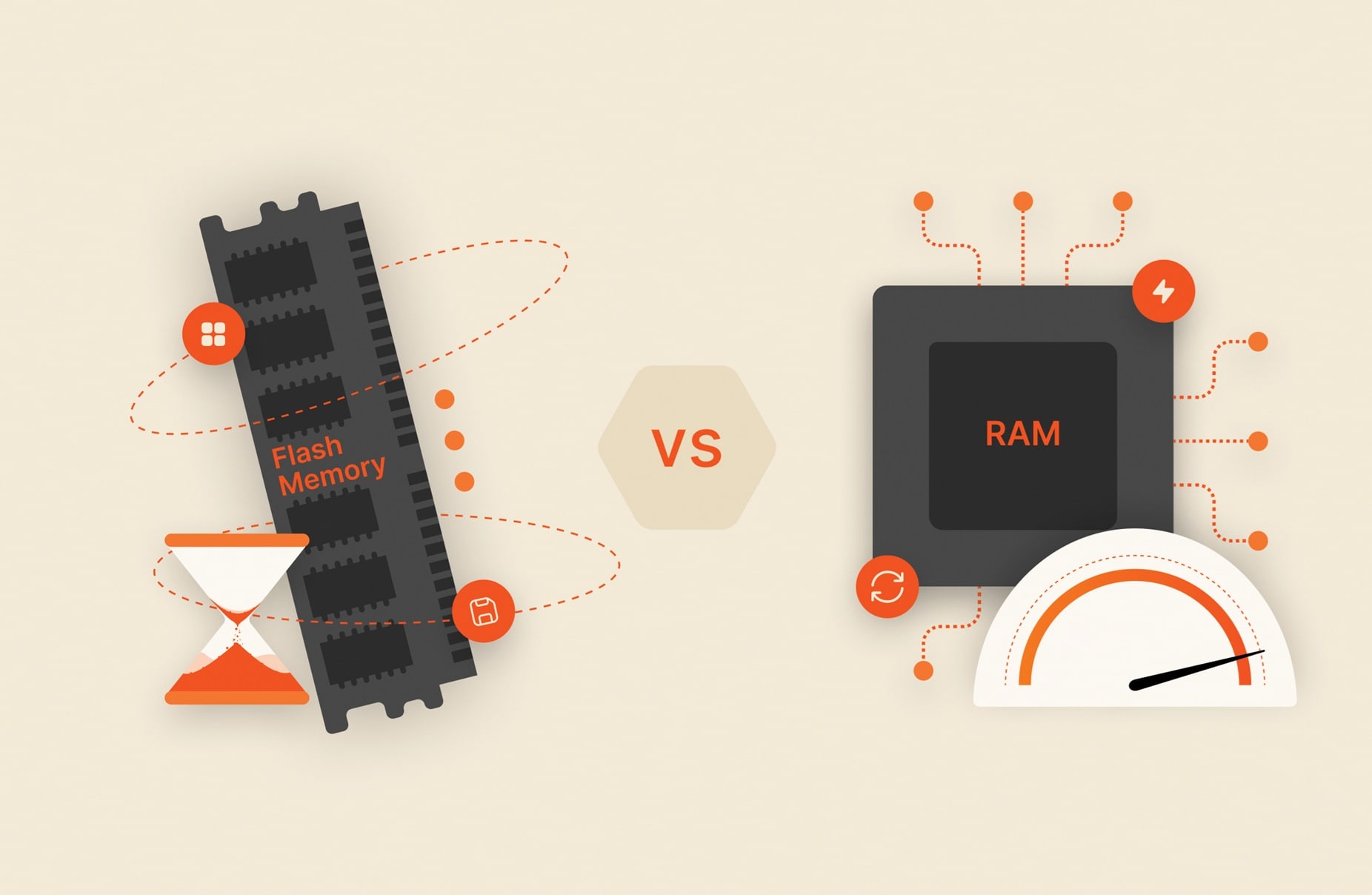
Flash memory and RAM both store data, but they work differently. Flash memory keeps files even when the device is off, making it great for storage. RAM is short-term memory that only holds data while the device is on—once you turn it off, RAM forgets everything.
Another key difference in the flash memory vs RAM comparison is speed and cost. RAM is much faster. Your computer uses RAM to hold the programs and files you're actively using. When you save a document, it moves from RAM to permanent storage like flash memory. This relationship between fast temporary memory and slower permanent storage helps balance performance and cost in modern devices.
| Feature | Flash Memory | RAM |
| Keeps data when powered off | Yes | No |
| Speed | Moderate | Very Fast |
| Cost per GB | Lower | Higher |
| Lifespan | Limited write cycles | Unlimited while powered |
| Main use | Long-term storage | Running programs |
| Found in | USB drives, SSDs, memory cards | Computer/phone memory |
| Size per dollar | More storage | Less storage |
| Power usage | Low | Higher |
Part 4: NAND vs NOR flash memory: Which to Use and When?

Knowing the difference between NAND and NOR flash memory helps you pick the best option for your needs. NOR flash allows direct access to any memory location, while NAND stores data in blocks. It's like comparing reading a book page by page (NAND) to instantly flipping to any page you want (NOR).
NAND vs NOR flash memory key differences:
- Speed: NOR flash memory reads data more quickly than NAND, but takes longer to write.
- Capacity: NAND typically offers much higher storage capacity
- Cost: NAND is less expensive per gigabyte than NOR
- Reliability: NOR generally has better data retention and endurance
- Space: NAND requires less physical space while providing the same storage capacity.
- Use cases: NOR is better for storing code that needs to be executed directly, while NAND is better for storing data
- Boot-up: NOR is often used for boot code in devices since it allows random access
- Lifespan: NOR typically handles more write/erase cycles than NAND
NAND Flash memory is made up of NAND Gates and these gates are present in a series sequence just like beads in a rosary. NAND Flash does not require more space as it can be developed compactly. NAND is preferred for data storage such as in digital devices.
You can learn detailed differences between NAND and NOR Flash Memory in the table below:
|
NAND Flash Memory |
NOR Flash Memory |
| NAND memory has ten times more endurance than NOR flash memory. | This type of flash memory does not have much endurance. |
| It is a very high-quality storage medium. | NOR memory is a low-quality storage medium. |
| The most used and the most popular memory type. This is why it is found in computers, tablets, and cell phones. | Rarely used in modern devices. |
| NAND Flash is ideal for storing image and video data. This is why most digital cameras and camcorders that use NAND for storing your data. | This memory is used only in devices with small read and write operations such as random and execute-in-place access. |
| NAND Memory has ten times more endurance than NOR Flash Memory. | The SLC type NOR Flash memory has more endurance than NAND Flash Memory. |
| The performance of NAND flash memory is greater than NOR flash as well. | NOR Flash consumes less power than NAND flash memory. |
| Cheaper than NOR Memory. | Expensive than NAND Flash. |
| Smallest Read and Smallest Write are performed on pages. | Read and Write operations can only be performed on bytes. |
Read More: What is Memory Stick?
Part 5: Easily Recover Data From Flash Memory: Use the Recoverit Tool
When disaster strikes and you lose precious photos or documents, knowing how to recover data from flash memory becomes crucial. Flash memory devices like USB drives or SD cards can fail for many reasons—accidental formatting, corruption, or physical damage. The good news is that in many cases, your data isn't truly gone. Special recovery tools can often bring back files you thought were lost forever.
One popular solution for those looking to recover data from flash memory is the Recoverit tool. This software specializes in retrieving lost data from various types of flash storage devices. Whether you've accidentally deleted files, reformatted your drive, or faced corruption issues, Recoverit offers a user-friendly approach to data recovery without requiring technical expertise.
Steps to recover data from flash memory using Recoverit:
- Download and install Recoverit on your computer. Connect your flash memory device to your computer. Launch Recoverit and select the drive you want to recover. Click "Start" to begin scanning the device.

- Wait for the scan to complete (may take several minutes). Preview recoverable files in the results.

- Select the files you want to restore. Click "Recover" and choose a save location (preferably different from the original device).

Related Video >>: How to Recover Lost Files from Flash Drive?
Part 6: Pro Tips to Recover Data From Flash Memory Without Any Loss
Even with good recovery tools, preventing data loss is always better than trying to fix it later. The process to recover data from flash memory doesn't always guarantee 100% success. Following certain best practices can improve your chances of successful recovery and help protect your data in the first place.
Pro tips to successfully recover data from flash memory:
- Stop using the device immediately after data loss to prevent overwriting
- Never save recovered files back to the same flash memory device you're recovering from
- Use write-protection when possible during recovery attempts
- Avoid physical damage—keep flash memory devices away from heat, water, and magnets
- Make regular backups of important data on multiple devices or cloud storage
- Use quality, reputable brands for your flash storage devices
- Safely eject flash memory devices before physically removing them from computers
- Consider professional recovery services for critical data if DIY methods fail
Conclusion
Flash memory has changed how we store and carry digital information. From tiny memory cards in cameras to solid-state drives in laptops, this technology surrounds us daily. Understanding what flash storage is helps you make better choices when buying devices or troubleshooting problems. The differences between NAND and NOR flash memory might seem technical, but they affect how your devices perform.
Comparing flash memory vs RAM or flash memory vs HDD shows why modern devices use combinations of these technologies. Each has strengths and weaknesses. Flash memory offers a good balance of speed, size, and energy efficiency for portable devices. Traditional hard drives (HDD) still offer the lowest cost for very large storage needs, while RAM provides the speed needed for running programs.
As flash memory technology continues to improve, we can expect even faster, larger, and more reliable storage options in the future.
Try Recoverit to Recover Data from Flash Memory
Security Verified. Over 7,302,189 people have downloaded it.
FAQ
-
What is the difference between flash memory and regular memory?
Flash memory keeps your data even when powered off, while regular computer memory (RAM) loses everything when turned off. Flash memory is slower but cheaper per gigabyte and is used for long-term storage of files and documents. RAM is very fast but expensive and used for running active programs and tasks. Most devices use both types for different purposes. -
How long does flash memory last?
Flash memory typically lasts for about 10 years of normal use. Each memory cell can handle a limited number of write cycles—usually between 3,000 to 100,000, depending on the quality and type. Consumer-grade NAND flash memory in USB drives might handle fewer writes than enterprise-grade flash storage in servers. Reading data doesn't wear out the memory; only writing new data does. -
Can I recover deleted data from flash memory?
Yes, you can often recover data from flash memory even after deletion. When you delete a file from flash storage, the system only removes the file's reference in the index, not the actual data. The data remains until overwritten by new files. Using data recovery software like Recoverit can help retrieve these "deleted" files if you act quickly before the space is reused. For best results, stop using the device immediately after noticing data loss.



 ChatGPT
ChatGPT
 Perplexity
Perplexity
 Google AI Mode
Google AI Mode
 Grok
Grok























